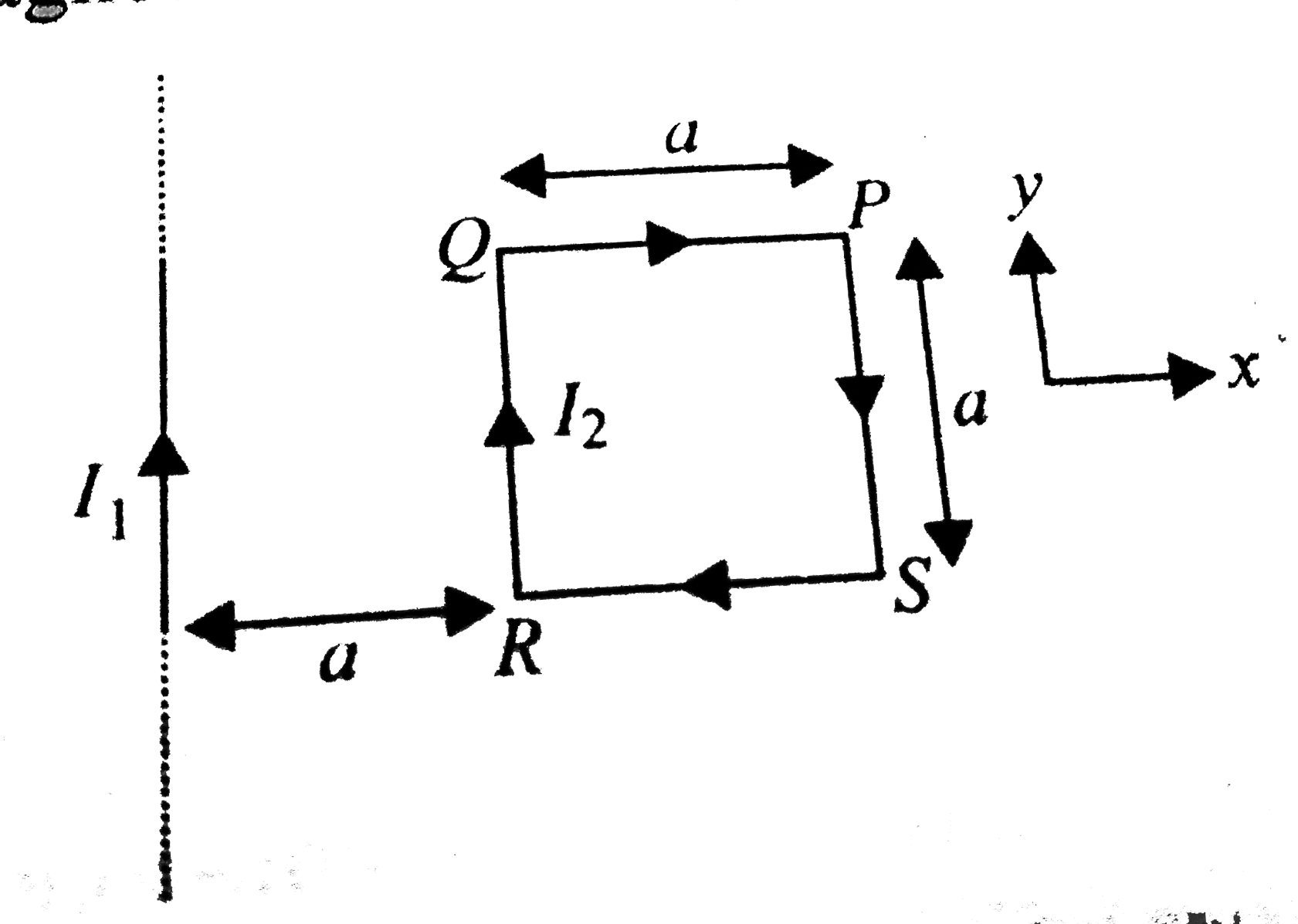A conducting wire of length l, lying normal to a magnetic field B, moves with a velocity v as shown in (a) Find the average magnetic fore on a free electron of the wire. Due to this magnetic force, electrons concentrate at one end resulting in an electric field inside the wire. The redistribution stops when the electric force on the free electrons balances themagnetic force. Find the electric field developed inside the wire when the redistribution field developed inside the wire when the redistribution stops. (c) what potential difference is developed between the ends of the wire?

(a) Volocity of electron = V,
Force=q(V×B)=qVB
(b)F=qE,F=qVB
or qE=qVB,
oraE=eVBorF=VB
(c)V=lE=LVB.
Topper's Solved these Questions
Similar Questions
Find the magnetic force on loop PQRS due to the wire.

View SolutionA currrent I is passed through a silver strip of width d and area of cross section A. The number of free electrons per unit volume is n. (a) Find the drift velocity v of the electrons. (b) If a magnetic field B exists in the region as shown in what is the average magnetic force on the free electrons? (c) Due to the magnetic force, the free electrons get accumulated on one side of the conductor along its length. This produces a transverse electric field in the conductor which opposes the magnetic force on the electrons. Find the magnitude of the electric field which will be the potential diference developed across the width of the conductor due to the electron- accumulation? The appearance of a transverse emf, when a current-carrying wire is placed in a magnetic field, is called hall effect.

View Solution
Knowledge Check
An electron enters in an electric field with its velocity in the direction of the electric lines of force. Then
AThe path of the electron will be a circleBThe path of the electron will be a parabolaCThe velocity of the electron will decreaseDThe velocity of the electron will increaseAn electric charge q is moving with a velocity w in the direction of a magnetic field B. The magnetic force acting on the charge is
AqvBBzeroCqvBDvqBFind the magnitude of magnetic force on the frame, as shown. The magnetic field acting as shown:
 AZeroB2IB[a√2+(a2+(L−a)2}1/2]ILBC3 ILBDILB
AZeroB2IB[a√2+(a2+(L−a)2}1/2]ILBC3 ILBDILB
An elelctron moves with velocity →v=aˆk in a magnetic field, →B=bˆi+cˆj. Find the magnetic force on the electron.
View SolutionAn electron moves with velocity →v=ak In a magnetic field of intensity →B=bˆi+cˆj . Find the magnetic force on the electron.
View SolutionAssertion : Magnetic force is always perpendicualr to the magnetic field.
Reason : Electric force is along the direction of electric field.
View SolutionThe free electrons is conducting wire are in constant thermal motion. If such a wire, carrying no current, is placed in a magnetic field, is there a magnetic force on each free electron? Is there a magnetic force on the wire?
View SolutionIn a uniform magnetic field of 5T, an electron is moving with constant velocity of 15m/s. The force on the electron is
View Solution